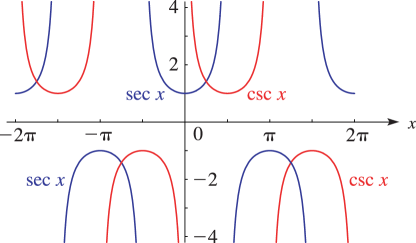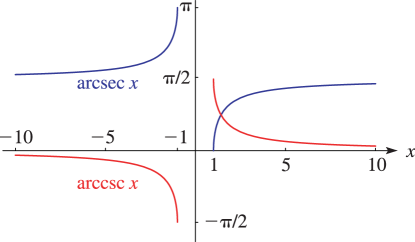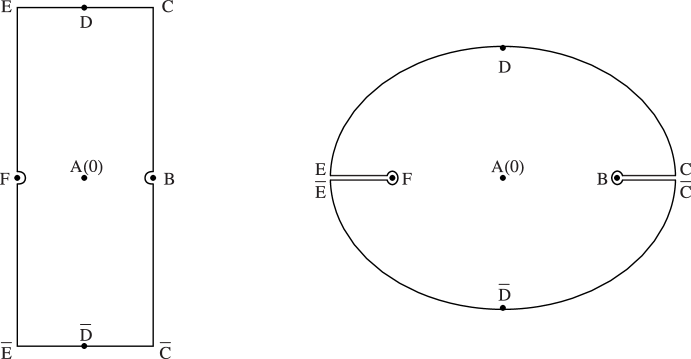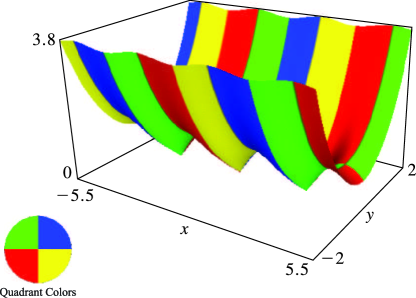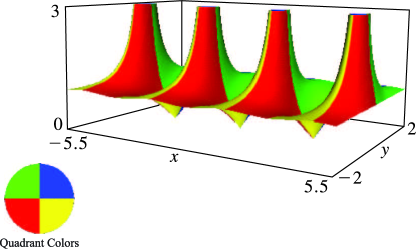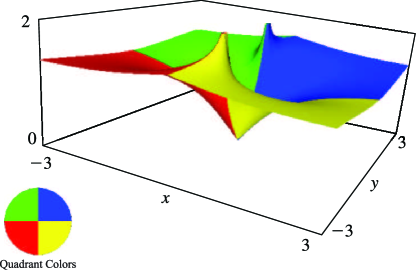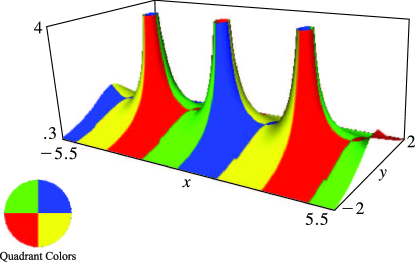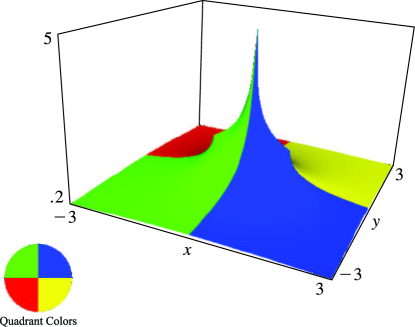4 Elementary FunctionsTrigonometric Functions4.14 Definitions and Periodicity4.16 Elementary Properties
§4.15 Graphics
Contents
- §4.15(i) Real Arguments
- §4.15(ii) Complex Arguments: Conformal Maps
- §4.15(iii) Complex Arguments: Surfaces
§4.15(i) Real Arguments
§4.15(ii) Complex Arguments: Conformal Maps
Figure 4.15.7 illustrates the conformal mapping of the strip onto the whole -plane cut along the real axis from to and to , where and (principal value). Corresponding points share the same letters, with bars signifying complex conjugates. Lines parallel to the real axis in the -plane map onto ellipses in the -plane with foci at , and lines parallel to the imaginary axis in the -plane map onto rectangular hyperbolas confocal with the ellipses. In the labeling of corresponding points is a real parameter that can lie anywhere in the interval .
§4.15(iii) Complex Arguments: Surfaces
In the graphics shown in this subsection height corresponds to the absolute value of the function and color to the phase. See also About Color Map.




